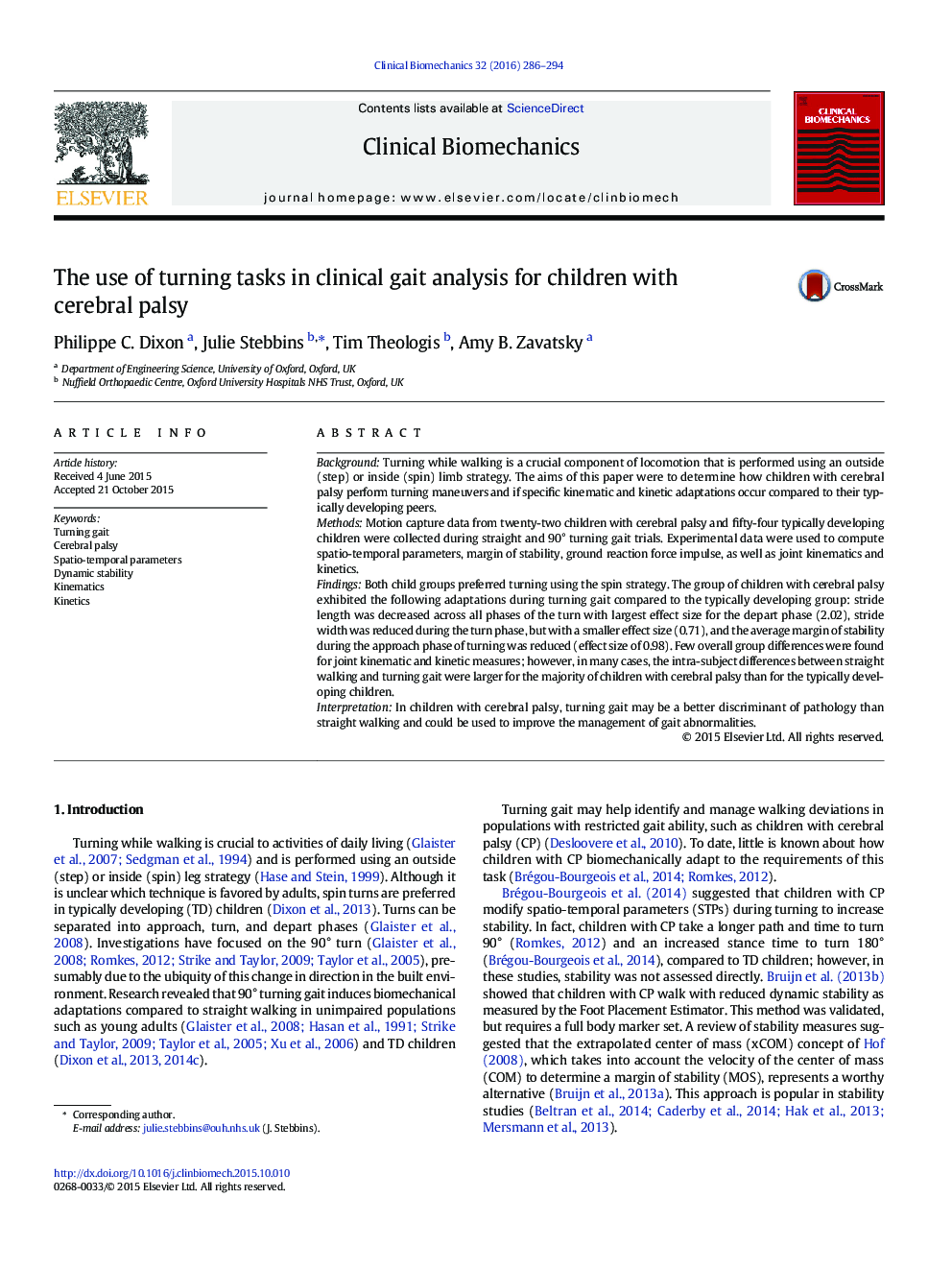| کد مقاله | کد نشریه | سال انتشار | مقاله انگلیسی | نسخه تمام متن |
|---|---|---|---|---|
| 6204672 | 1603746 | 2016 | 9 صفحه PDF | دانلود رایگان |
- Little is known about turning gait adaptations in children with cerebral palsy.
- Kinematics and kinetics of turning gait and straight walking were measured.
- Pathology-related adaptations were observed in the cerebral palsy group.
- Turning gait may be a better discriminant of pathology than straight walking.
- Turning gait could be implemented in clinical gait analysis sessions.
BackgroundTurning while walking is a crucial component of locomotion that is performed using an outside (step) or inside (spin) limb strategy. The aims of this paper were to determine how children with cerebral palsy perform turning maneuvers and if specific kinematic and kinetic adaptations occur compared to their typically developing peers.MethodsMotion capture data from twenty-two children with cerebral palsy and fifty-four typically developing children were collected during straight and 90° turning gait trials. Experimental data were used to compute spatio-temporal parameters, margin of stability, ground reaction force impulse, as well as joint kinematics and kinetics.FindingsBoth child groups preferred turning using the spin strategy. The group of children with cerebral palsy exhibited the following adaptations during turning gait compared to the typically developing group: stride length was decreased across all phases of the turn with largest effect size for the depart phase (2.02), stride width was reduced during the turn phase, but with a smaller effect size (0.71), and the average margin of stability during the approach phase of turning was reduced (effect size of 0.98). Few overall group differences were found for joint kinematic and kinetic measures; however, in many cases, the intra-subject differences between straight walking and turning gait were larger for the majority of children with cerebral palsy than for the typically developing children.InterpretationIn children with cerebral palsy, turning gait may be a better discriminant of pathology than straight walking and could be used to improve the management of gait abnormalities.
Journal: Clinical Biomechanics - Volume 32, February 2016, Pages 286-294
